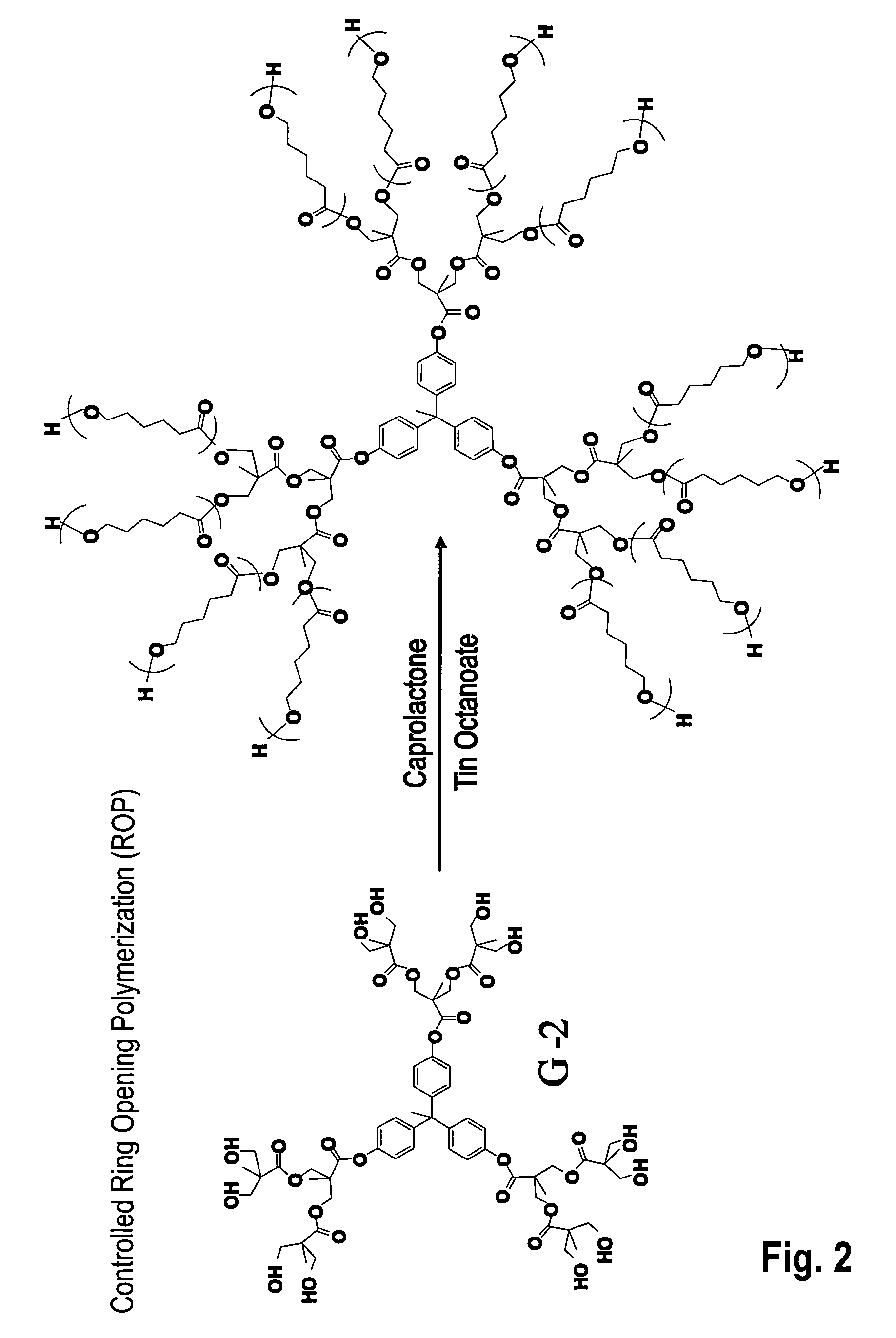Surface-decorated polymeric amphiphile porogens for the templation of nanoporous materials
a porogen and surface-decorated technology, applied in the field of polymer chemistry and nanotechnology, can solve the problems of difficult control of n&g procedures, small domain formation of isolated pores, and potential difficulties in achieving
- Summary
- Abstract
- Description
- Claims
- Application Information
AI Technical Summary
Benefits of technology
Problems solved by technology
Method used
Image
Examples
example 1
Anionic Star Polymerization with TDBMS-PL Initiator
[0086]To a vigorously dried 250 mL three neck flask, cyclohexane (170 mL), styrene (6 mL, 0.052 mol), and tetrahydrofuran (THF, 8 mL) were combined under argon. A 3-t-butyldimethyl(silyloxy)-1-propyl lithium (TBDMS-PL) initiator (1.46 mL, 0.47 M in cyclohexane) was added with efficient stirring. After stirring at room temperature for 30 minutes, an aliquot of the bright orange solution was withdrawn, precipitated into methanol under argon, isolated and saved for further analysis. p-Divinylbenzene (p-DVB, 0.25 mL, 1.70 mmol, p-DVB / LE ratio=1.4, LE=living polymer end) was added to the reaction to give a deep wine color solution. After 30 minutes, another aliquot was withdrawn, precipitated in methanol and saved for analysis. To the remaining “living core” polymer solution, styrene (4.0 mL, 35 mmol) was added in one portion. The final red-orange solution was stirred for 30 minutes and methanol (1.5 mL) was added to quench the polymeriz...
example 2
Half-Star Polymerization with TDBMS-PL Initiator
[0091]The procedure described in example 1 was used except that the polymerization was quenched with methanol at the “living core” stage without the final styrene addition. Quantitative yield of polymer product was obtained from precipitation from methanol.
example 3
Formation of Hydroxy Terminated Star Polymer
[0092]Tetrabutylammonium fluoride (1M in THF) was slowly added to a 5 wt % solution of the protected star polymer of example 1 in THF. After stirring at room temperature for 14 h, the solution was precipitated into methanol to give the hydroxy terminated star polymer. Multiple precipitations from methanol gave pure polymer product.
PUM
| Property | Measurement | Unit |
|---|---|---|
| spatial diameter | aaaaa | aaaaa |
| spatial diameter | aaaaa | aaaaa |
| spatial diameter | aaaaa | aaaaa |
Abstract
Description
Claims
Application Information
 Login to View More
Login to View More - R&D
- Intellectual Property
- Life Sciences
- Materials
- Tech Scout
- Unparalleled Data Quality
- Higher Quality Content
- 60% Fewer Hallucinations
Browse by: Latest US Patents, China's latest patents, Technical Efficacy Thesaurus, Application Domain, Technology Topic, Popular Technical Reports.
© 2025 PatSnap. All rights reserved.Legal|Privacy policy|Modern Slavery Act Transparency Statement|Sitemap|About US| Contact US: help@patsnap.com



